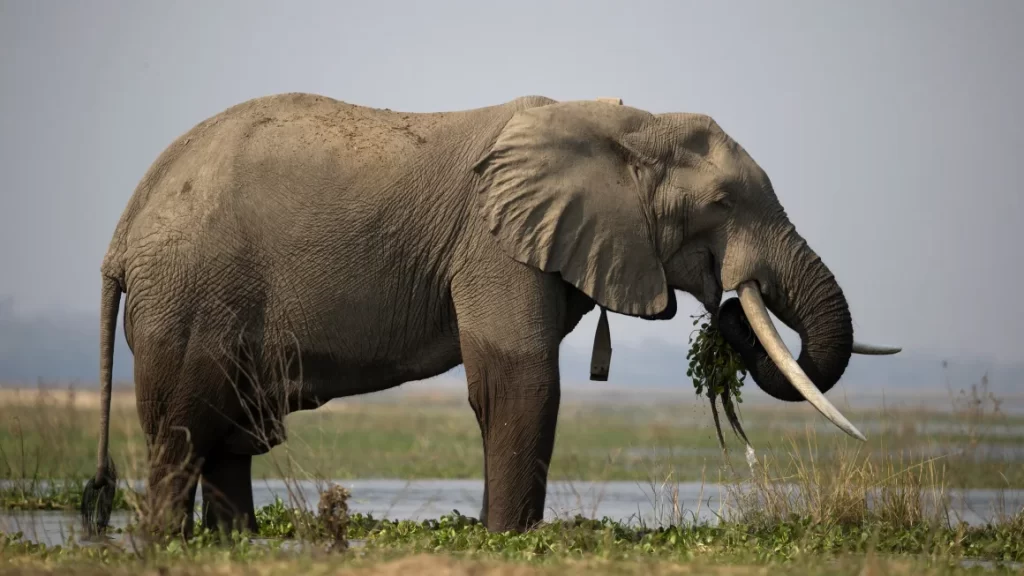Zimbabwe Authorizes Culling of Elephants Amid Severe Drought Crisis
3 min read
Zimbabwe’s elephant population is the second-largest in the world.

Zimbabwe’s elephant population is the second-largest in the world.
In a controversial move, Zimbabwe has approved the culling of 200 elephants to address the escalating hunger crisis caused by the country’s most severe drought in decades. With nearly half of Zimbabwe’s population facing acute food insecurity, Tinashe Farawo, spokesperson for the Zimbabwe Parks and Wildlife Authority, confirmed the plan during a recent interview.
This decision aligns with similar actions taken in Namibia, where officials have also sanctioned the culling of elephants and other wildlife to mitigate food shortages exacerbated by prolonged drought conditions. Both countries are grappling with the impacts of a climate pattern known as El Niño, which has resulted in significantly reduced rainfall, further straining food resources.
Zimbabwe’s elephant population is currently estimated at over 84,000—nearly double the country’s ecological capacity of 45,000. This situation has prompted concerns over the sustainability of the habitat and increased human-wildlife conflicts. Environment Minister Sithembiso Nyoni explained to lawmakers that the excess population of elephants is straining local resources, which, in turn, leads to heightened interactions between humans and wildlife.
Nyoni emphasized the necessity of addressing both the elephant overpopulation and the pressing needs of local communities. “We are coordinating with Zim Parks and community groups to potentially process and distribute the meat,” she noted. The aim is to ensure that this protein source reaches the communities in greatest need, illustrating a pragmatic approach to addressing both wildlife management and food insecurity.
The situation mirrors Namibia’s recent decisions, where 700 wild animals, including elephants, were approved for culling last month. As of now, over 150 animals have been killed, with more than 125,000 pounds of meat already distributed to those suffering from food shortages.
The drought affecting Zimbabwe and Namibia is just one example of a wider crisis in southern Africa, where many nations are facing similar challenges. This severe weather phenomenon, intensified by climate change, has left vast areas of the region dry and unproductive, further jeopardizing food security.
Farawo indicated that the culling process would commence as soon as the necessary administrative steps are completed. He emphasized that the culling efforts would focus on regions with the highest concentrations of elephants, aiming to mitigate potential conflicts and provide relief to communities affected by elephant-related incidents.
Despite the government’s rationale, the proposed culling has attracted significant backlash from conservationists and animal rights activists. Farai Maguwu, director of the Zimbabwe-based advocacy group Center for Natural Resource Governance, voiced his opposition, stating, “Culling of elephants must be stopped. Elephants have a right to exist, and future generations deserve to see them in their natural habitats.”
Concerns about the long-term implications of such measures are echoed by conservation biologist Keith Lindsay, who cautioned that using wildlife as a food source could create a dangerous precedent. He warned that it may lead to a sustained demand for bushmeat, putting additional pressure on already vulnerable wildlife populations.
However, Farawo defended the culling as a necessary response to an urgent situation. “The animals are causing significant disruption in communities and posing serious risks to human lives,” he said, highlighting recent incidents, including the tragic deaths of two individuals from elephant attacks in the northern regions of the country. Reports indicate that at least 31 people have lost their lives this year due to conflicts with wildlife, underlining the critical need for management solutions.
As Zimbabwe navigates these complex issues, the culling of elephants is set against a backdrop of broader environmental and humanitarian challenges. The balance between conservation efforts and the immediate needs of local populations continues to provoke debate and demand careful consideration.